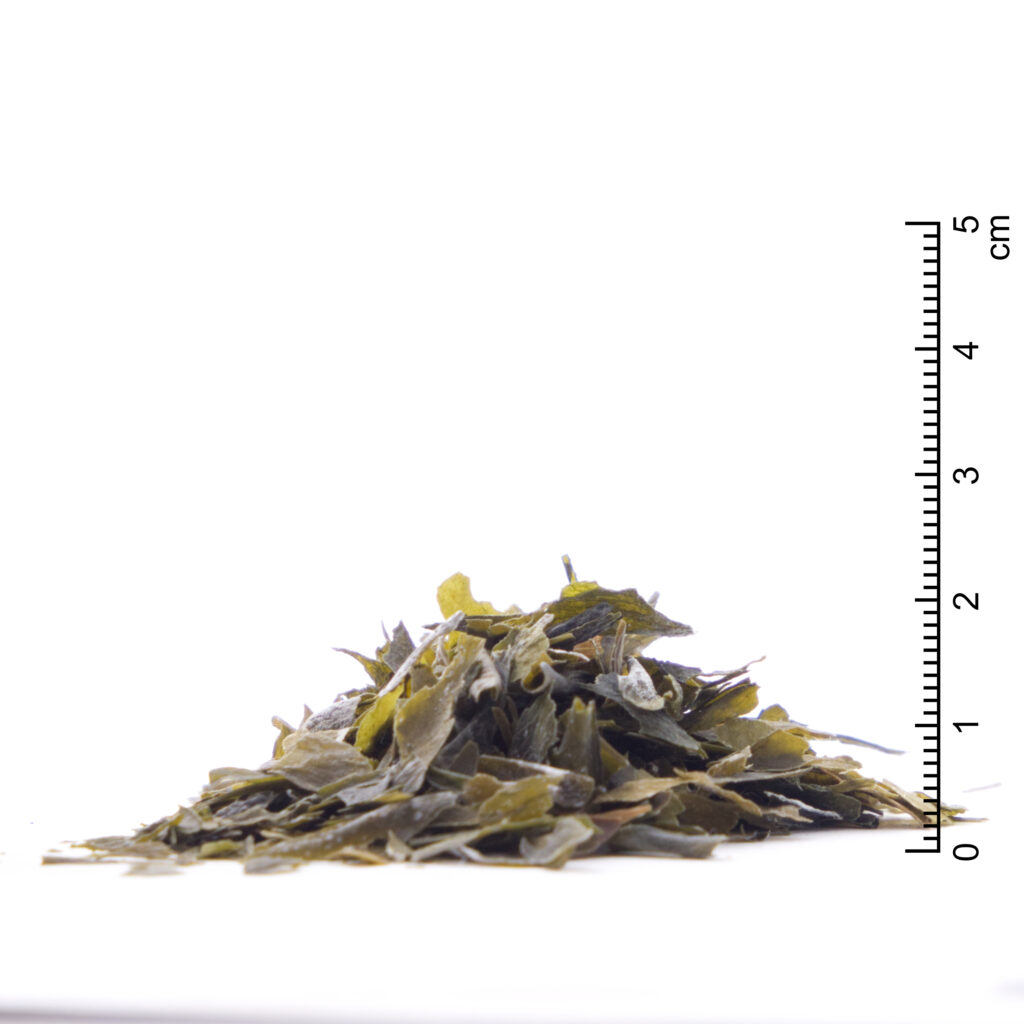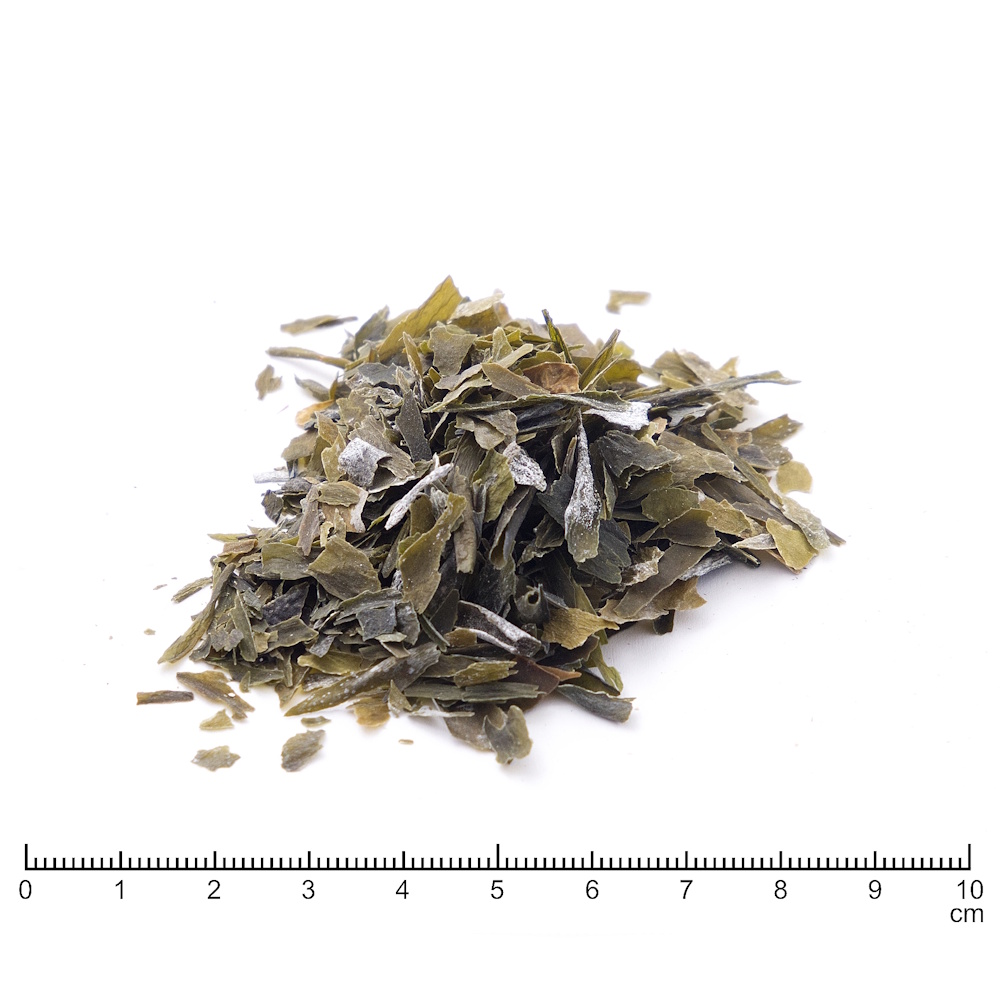Origin
Laminaria species are found in cool, nutrient-rich coastal waters of the North Atlantic. The most important areas for European kombu harvesting are the coasts of Spain and Portugal, Brittany in France and the west coast of Ireland. There, they prefer to grow in rocky coastal areas with good water circulation and at depths of 1 to 10 metres.
Appearance
Depending on the water depth, it has a stem up to one to two metres long and a leathery leaf with ‘fingers’ up to 1.5 metres long. The plants are greenish-brown to golden yellow and sway in the waves.
Production
In Europe, the algae are mainly harvested in the wild, but some are also cultivated. Harvesting is done manually or with boats at low tide or by divers. After harvesting, they are washed, destoned, sorted and gently dried at low temperatures. They are then crushed and processed into flakes. Processing is subject to hygiene and food safety standards.





